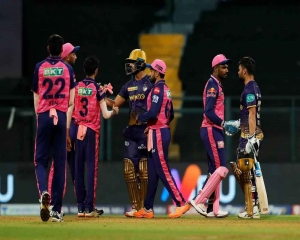Despite legal prohibitions in many States, begging persists with beggars being one of the highest recipients of household donations
Begging is a ubiquitous phenomenon in India and is hidden in plain sight. Perceptions of ‘persons engaged in Beggary’ may vary but it is also evident that many households donate to them. ‘Persons engaged in Beggary’ are largely missing from the discussions on public policy in the country. A recent study by the Centre of Social Impact and Philanthropy (CSIP) at Ashoka University showed that ‘persons engaged in Beggary’ are one of the highest recipients of household donations, ranking only after ‘religious organisations’. This leads us to question, what are the motivations that lead households in such a large proportion to donate to ‘persons engaged in Beggary’. Who are the biggest donation-makers to ‘beggars’ with respect to gender, geography and age? And in what ‘form’ donations are received by the ‘persons engaged in Beggary’?
Even though begging is not a crime it is legally prohibited in more than twenty States and Union Territories and can invite punishment for one year to 10 years and even beyond under special circumstances. The pros and cons of the existing laws are another debate.
The study by CSIP showed a 14% increase in total ‘cash’ donations by Indian households from INR 23.7 thousand crores in 2020-21 to INR 27 thousand crores in 2021-22 of which ‘persons engaged in Beggary’ are one of the preferred recipients of household giving among ‘religious organisations’, ‘non-religious organisations’, ‘family and friends’, ‘household staff’, and ‘supporting a cause or signing a petition’. They are the second highest recipient of household donations both in terms of overall market size and the proportion of households who made donations to them among other recipient groups in the study. The report further notes that the market size and the average cash payments to the ‘persons engaged in Beggary’ have increased from 2020-21 to 2021-22.
While ‘persons engaged in Beggary’ are one of the preferred recipients, households do not trust them with their money but with materials. Despite a high proportion of households who donated to ‘persons engaged in beggary’ they received the lowest value of ‘cash’ donations from households (under INR 100).
While ‘persons engaged in Beggary’ were least preferred for ‘cash’ donations as compared to other recipient groups in the study, a clear preference to donate ‘in-kind’ was noted for this recipient group. More than half of those donating to ‘persons engaged in Beggary’ donated ‘in-kind’ which is starkly different from ‘in-kind’ donations received by other recipient groups.
Households are mostly driven by their intrinsic motivations when giving to the ‘persons engaged in Beggary’. ‘Religious beliefs’ are one of the top motivators. It guided 55% of households that gave to the ‘persons engaged in Beggary’. Religious beliefs can be understood as ‘helping others is a way to serve God’, and ‘good karma/ Almighty rewards good deeds’.
Furthermore, ‘family traditions’ play an important role in motivating households to give to the ‘persons engaged in Beggary’. They are also affected by the visible hardship due to poverty and are driven to donate in order to support someone in financial distress. Rendering ‘seva’ or service also emerged as a significant motivation for giving to ‘persons engaged in Beggary’.
Households also find it easier to give in smaller amounts in ‘cash’, which leads many households to offer some money to ‘persons engaged in Beggary’. About 60% proportion of households responded to have donated to them. The study also found that donations made to ‘persons engaged in Beggary’ were in the range of smaller amounts ‘under INR 100’.
It was intriguing to find that the givers who are more empathetic to the ‘persons engaged in Beggary’ are the people who have a ‘vulnerable’ position in society and are mainly dependent on others for social and economic security. Older women and households from rural areas and from lower socio-economic categories are primary givers to ‘persons engaged in Beggary’.
More households from rural India donate to ‘persons engaged in Beggary’ than households from large towns. In fact, the proportion of households making offerings to ‘persons engaged in Beggary’ in rural India was higher than the national average of the proportion of households who gave to ‘persons engaged in Beggary’.
Similarly, ‘giving’ by lower socioeconomic category (SEC D/E) to ‘persons engaged in Beggary’ was higher than the national average. While about 53% of households from higher and middle socio-economic categories (SEC A, SEC B and SEC C) contributed, more than 65% of households contributed towards ‘persons engaged in Beggary’ from the lower socioeconomic groups (SEC D/E). In terms of gender and age, older women between the ages of 46 to 60 years are the biggest and primary donation-makers to the ‘persons engaged in Beggary’.
Beggary in many forms has been in existence for ages. Due to the hardships faced, persons engaged in Beggary usually suffer from negativity, hopelessness, low self-esteem and stigma. In India, ‘people engaged in Beggary’ are often seen outside religious places.
The writer is Senior Research Manager at the Centre for Social Impact and Philanthropy (CSIP), Ashoka University. Views expressed are personal

























